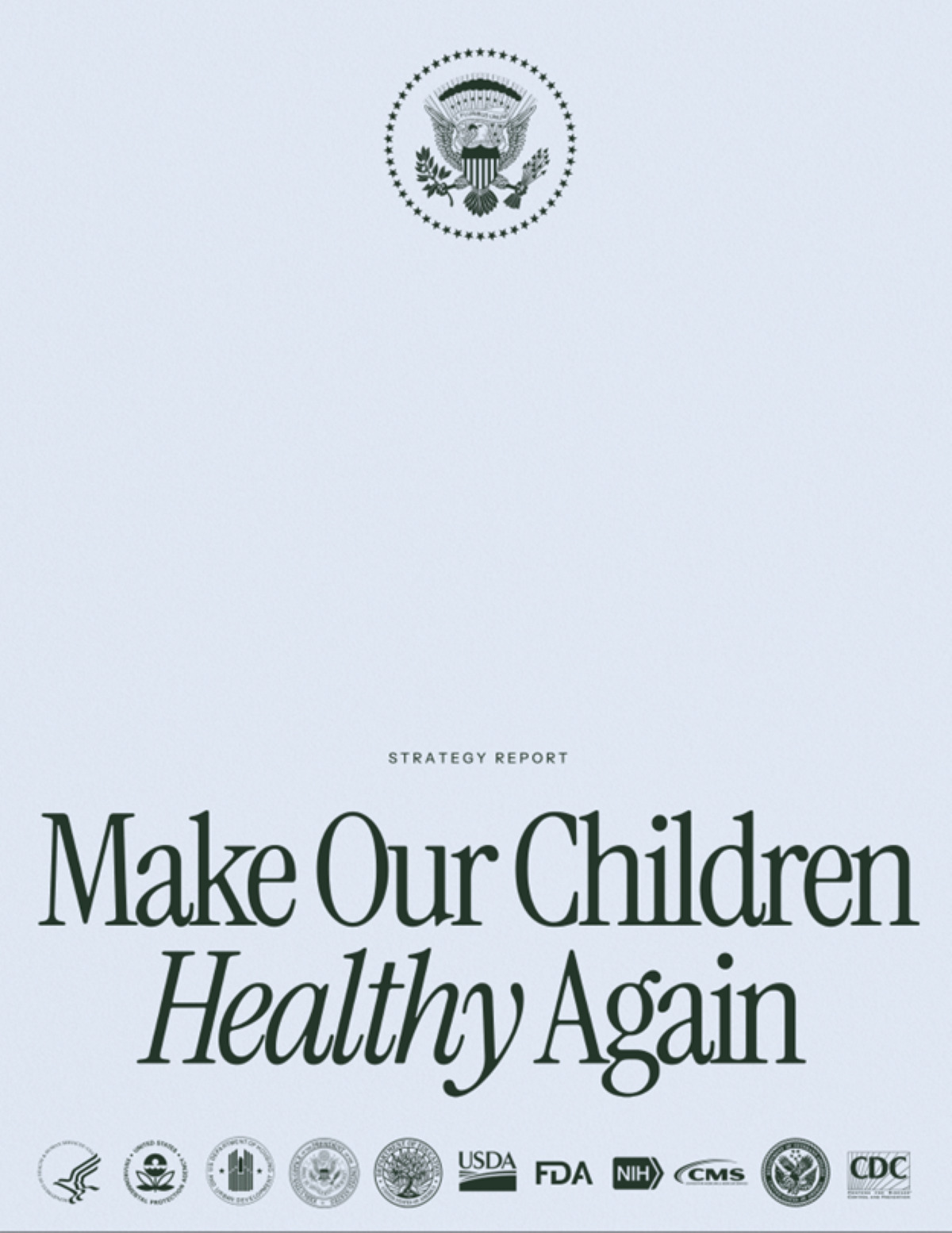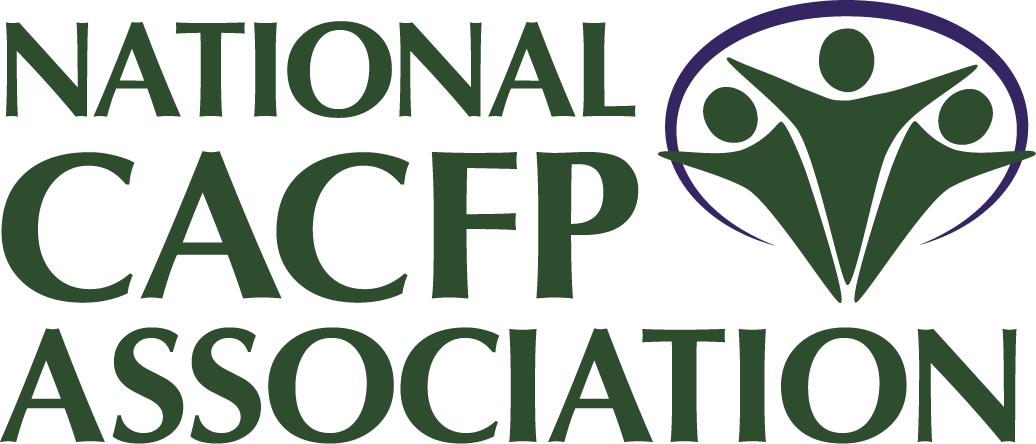White House Releases Make Our Children Healthy Again Strategy
September 9, 2025

On September 9, 2025, the White House released the Make Our Children Healthy Again Strategy Report which outlines actions of the executive branch to address the childhood chronic disease crisis. This strategy was created based on the findings of the Make Our Children Healthy Again Assessment that was released in May of 2025.
The four main pillars of the Strategy include:
- Advancing research,
- Realigning incentives,
- Fostering private sector collaboration, and
- Increasing public awareness.
Why It Matters
The Strategy will be implemented by federal agencies, including USDA and HHS, to align existing policies and programs with the Make America Healthy Again (MAHA) agenda. The Strategy highlights CACFP as an important tool for accessing healthy, nutritious meals in child care. Several Strategy policies will impact the CACFP as the Survey calls for a reduction in Ultra-Processed Foods (UPFs) and a prioritization of “whole healthy foods”.
CACFP Call Outs
The Strategy includes actions related to all Federal CNPs. While the Strategy primarily addresses actions for schools, it also explicitly mentions the CACFP twice. Specifically, the Strategy highlights how the CACFP can be operated in partnership with Head Start and the Child Care and Development Fund (CCDF) to promote healthy eating in child care settings.
Head Start Nutrition: ACF and USDA will implement the new DGAs through supporting access to USDA's Child and Adult Care Food Program (CACFP) and the National School Breakfast and Lunch programs in Head Start providers, and will provide supplemental funding opportunities to support the provision of whole, healthy foods in Head Start programs.
Early Childhood Nutrition: ACF will partner with the USDA’s Food and Nutrition Service to promote healthy meals in child care settings through collaboration between USDA’s CACFP and ACF’s Child Care and Development Fund.
Other Strategies Impacting CNPs
Policy Reforms
Early Childhood Physical Activity: ACF, in partnership with PCSFN, will promote greater physical activity in afterschool and out-of-school time programs, including programs receiving child care subsidies.
Screen Time: The Surgeon General will launch an education and awareness initiative on the effects of screens on children and the actions being taken by states to limit screentime at school.
CACFP Alignment
The Healthy Hunger Free Kids Act of 2010 updated the goals of the CACFP to include the promotion of physical activity and limitation of electronic media use. On average, CACFP operators provide four opportunities for physical activity, just over two hours a day (SNACS-II). In addition, less than half of CACFP operators allows any screen time – on average children in CACFP programs were limited to 27 minutes of screen time per day (SNACS-I). CACFP operators, therefore, already align with the Strategy in promoting physical activity and limiting screen time during care.
USDA Nutrition Programs: USDA will use its authorities to prioritize utilization and promotion of whole, healthy foods across its 16 nutrition programs.
Dietary Guidelines for Americans (DGAs): USDA and HHS will update the 2025 - 2030 DGAs, which will align with science, data, and health recommendations in a concise, user-friendly format. USDA and HHS will further reform future DGA development processes, including the structure and members of the advisory committee and scientific review of future DGAs.
Food Dyes: FDA will continue to advance and implement policies to limit or prohibit the use of petroleum-based food dyes (FD&C certified colors) in all food products approved in the U.S. The USDA will apply the framework to food served through Federal nutrition programs, especially the school lunch program. USDA and HHS will work to develop research and policies to support domestic agriculture production of plants used as natural color sources. FDA will continue to expedite its review and approval of color additive petitions for colors from natural sources and explore ways to provide greater flexibility in connection with the use of “no artificial color” and other labeling claims.
Ultra-Processed Foods: USDA, HHS, and FDA will continue efforts to develop a U.S. government-wide definition for “Ultra-processed Food” to support potential future research and policy activity.
CACFP Alignment
Child Nutrition Programs are continuously updated to adhere to the Dietary Guidelines for Americans. In the most recent Study of Nutrition and Activity in Child Care Settings (SNACS-II), it was found that CACFP operators serve meals that highly align with the DGAs. At breakfast, CACFP meals scored 98% for total fruits, 100% for whole fruits, 100% for dairy and 92% for whole grains and at lunch, they scored 94% for total fruits, 98% for whole fruits, 90% for total vegetables, 100% for dairy, and 92% for total protein foods. CACFP operators also scored 96% at breakfast and 100% at lunch for moderating added sugars in their meals. These scores show near perfect alignment with the DGAs and emphasize how CACFP operators are already serving whole, healthy foods and limiting added sugars.
CACFP best practices include serving whole fruits, limiting processed meats, serving unflavored milk to all participants and avoiding foods that are a source of added sugars.
Infant Formula: FDA will modernize nutrient requirements for formula, increase testing for heavy metals and other contaminants to help ensure access to high-quality and healthy infant formula sold in the United States, and encourage companies to develop new infant formulas.
Breastfeeding: USDA and HHS will work to increase breastfeeding rates, whether through the Special Supplemental Nutrition Program for Women, Infants, and Children or other policies that support breastfeeding mothers, and will work with other Federal partners to develop policies to promote and ensure a safe supply of donor human milk.
CACFP Alignment
It is a best practice of the CACFP to, “support mothers who choose to breastfeed their infants by encouraging mothers to supply breastmilk for their infants while in day care and offering a quiet, private area that is comfortable and sanitary for mothers who come to the center or day care home to breastfeed (CACFP 15-2016).” CACFP operators are also required to offer at least one type of iron-fortified infant formula.
Process Efficiencies and Deregulation
Farm to School: Improve the farm-to-school grants application process to better connect local producers to schools.
CACFP Alignment
The Farm to School grant is a great opportunity for CNP operators to incorporate more local items into their menus. Many Schools and CACFP operators take advantage of this grant to enhance their meal services and improve agricultural education offerings to those in their care. It is a best practice of the CACFP to incorporate seasonal and locally produced foods into meals.
Milk Regulations: Remove restrictions on whole milk sales in schools, allowing districts to offer full-fat dairy options alongside reduced-fat alternatives. Eliminate mandatory reduced-fat requirements in federal nutrition programs to allow consumer choice.
CACFP Alignment
CACFP operators are efficient in meeting requirements set forth by the DGAs for dairy, as shown in their 100% score for dairy at breakfast and lunch (SNACS-II). Operators are able to effectively provide a variety of milk to those in their care that is most appropriate for their age group.
Public Awareness
DGAs: USDA and HHS will launch an education campaign based on the updated DGAs. The campaign will expand upon a DGA that prioritizes whole foods, including protein foods, fruits, and vegetables, minimizes highly processed foods and added sugar, and brings awareness to strategies to improve health.
School Campaign: USDA, HHS, ED, and the PCSFN will work with States and schools across the country on a Make American Schools Healthy Again awareness campaign that provides tools to implement best practices such as increasing physical activity and improving nutrition options.
To read the full Strategy, visit https://www.whitehouse.gov/maha/.
